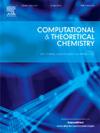A fullerene-based strategy to enhance para-aminobenzoic acid permeability in skin cancer treatment: DFT and molecular dynamic study
IF 3
3区 化学
Q3 CHEMISTRY, PHYSICAL
引用次数: 0
Abstract
Using nanomaterials to alter pharmaceutical molecules can significantly enhance how well drugs are absorbed and how long they remain stable in the body. There's a lot of research showing that this approach has been successful and holds great potential for improving medication effectiveness. Solubility and diffusion are usually affected by how the drug and nanocarrier interact with each other. A compound should be better able to pass biological membranes if it dissolves more easily in lipids. Still, the effects of these changes on solubility dynamics and permeability have not been well studied. We introduce the idea of “targeted lipid solubility enhancement” and look into how it works to improve the pharmacological properties of PABA that has been loaded onto a functionalized fullerene. We use DFT calculations and MD simulations to look at how changes in the structure affect the molecule's stability and how it moves in different situations. The findings show that altering the way the chemical compound and the nanocarrier work together can make it easier for the compound to move through a membrane. This improvement can occur even when the compound and the nanocarrier generally prefer to stay connected closely. Our findings highlight a targeted enhancement of lipid solubility, specifically designed to improve para-aminobenzoic acid (PABA) permeability across lipid-rich skin barriers.

一种基于富勒烯的策略增强对氨基苯甲酸在皮肤癌治疗中的渗透性:DFT和分子动力学研究
使用纳米材料改变药物分子可以显著提高药物被吸收的程度以及它们在体内保持稳定的时间。有很多研究表明,这种方法是成功的,并且在提高药物效果方面具有很大的潜力。溶解度和扩散通常受药物与纳米载体相互作用的影响。如果一种化合物更容易溶解在脂质中,它就能更好地通过生物膜。然而,这些变化对溶解度动力学和渗透率的影响尚未得到很好的研究。我们介绍了“靶向脂溶性增强”的概念,并研究了它如何改善负载在功能化富勒烯上的PABA的药理学性质。我们使用DFT计算和MD模拟来观察结构的变化如何影响分子的稳定性以及它在不同情况下如何移动。研究结果表明,改变化合物和纳米载体一起工作的方式可以使化合物更容易通过膜。即使化合物和纳米载体通常倾向于保持紧密连接,这种改进也会发生。我们的研究结果强调了有针对性地增强脂质溶解度,专门设计用于改善对氨基苯甲酸(PABA)通过富含脂质的皮肤屏障的渗透性。
本文章由计算机程序翻译,如有差异,请以英文原文为准。
求助全文
约1分钟内获得全文
求助全文
来源期刊

Computational and Theoretical Chemistry
CHEMISTRY, PHYSICAL-
CiteScore
4.20
自引率
10.70%
发文量
331
审稿时长
31 days
期刊介绍:
Computational and Theoretical Chemistry publishes high quality, original reports of significance in computational and theoretical chemistry including those that deal with problems of structure, properties, energetics, weak interactions, reaction mechanisms, catalysis, and reaction rates involving atoms, molecules, clusters, surfaces, and bulk matter.
 求助内容:
求助内容: 应助结果提醒方式:
应助结果提醒方式:


